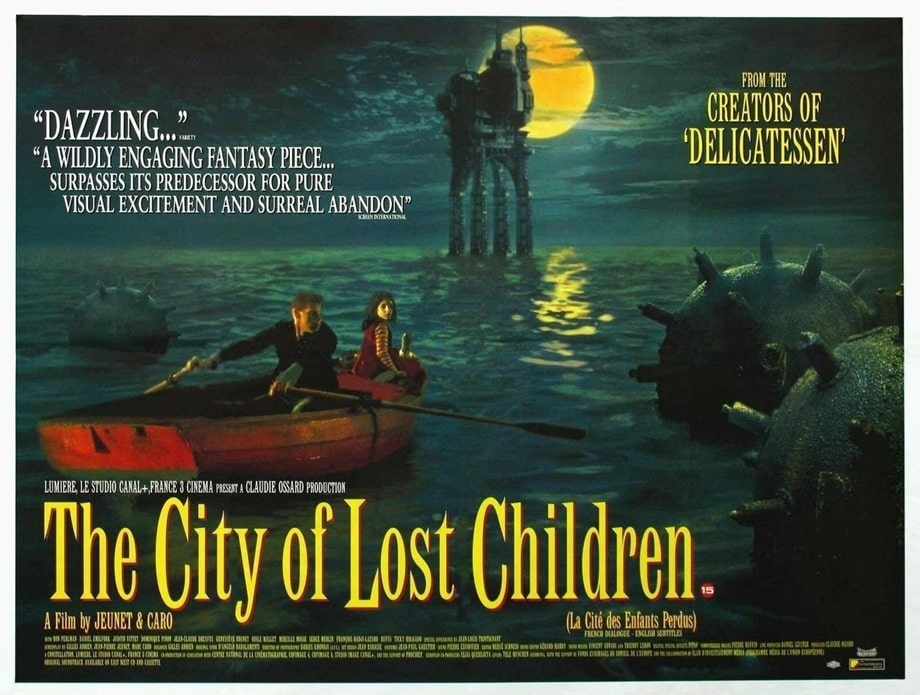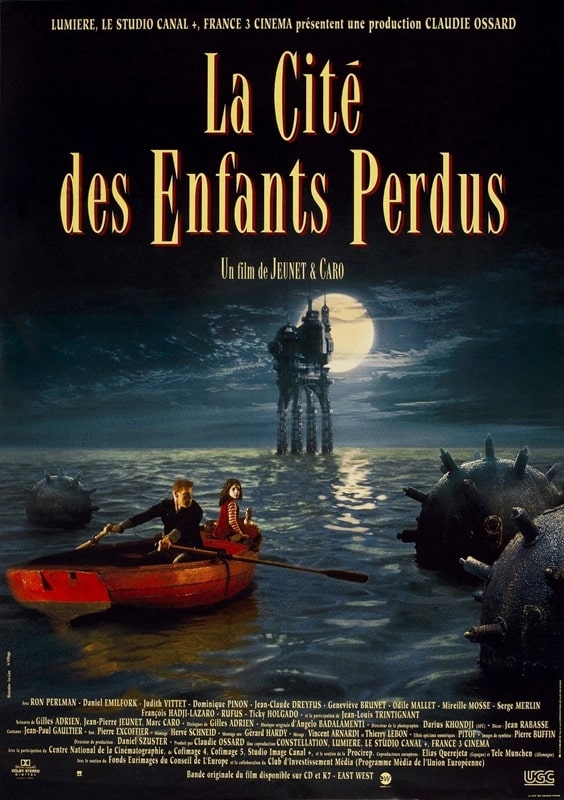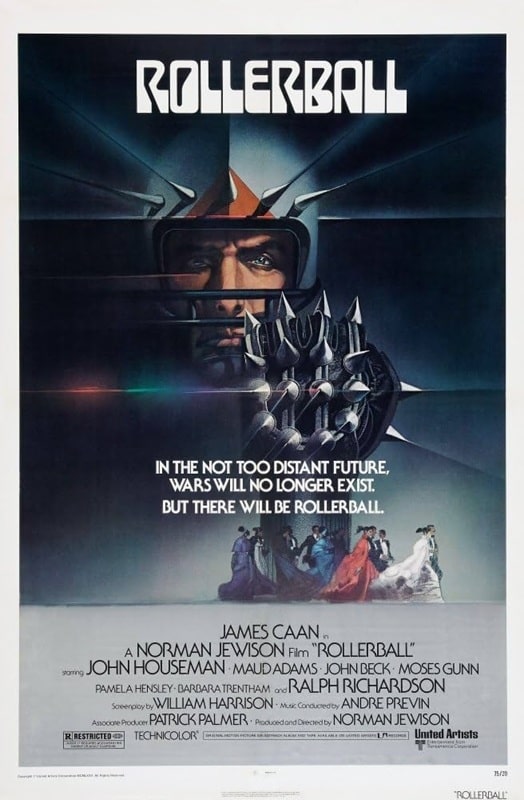My Top Thirty Films, Part 1

Here’s a New Year’s treat* to distract you from the fact that I haven’t completed a new themed watch-a-thon (it’s coming, eventually).
I’ve had a little think about my favorite films, and what makes them my favorites. As you will see, my choices are on the whole rather fluffy, but these are the films that I return to time and time again for comfort, or as a way to reset my brain. I should be ashamed to admit that there really aren’t many ‘sensible’ films on this list — in the sense that critical classics such as Citizen Kane, Belle de Jour, Black Narcissus, The Seventh Seal, or White Chicks don’t show up — however, the films that make me truly happy are the jolly romps, flights of fancy, or nostalgia-triggers.
I can appreciate, even love, a serious drama, but I won’t return to it time and time again.
There are some noticeable absences, films I have recently covered like Alien, Blade Runner, Kong: Skull Island, and Rogue One, but trust me they’re on this list in spirit.
I’d be very interested to find out if any of my favorites align with any of your own — please let me know in the comments below!
Without further ado, in no particular order, and no ratings (because they are all 10s), let’s get cracking!
*your mileage may vary

After the Fox (1966)
Who’s in it?
Peter Sellers, Victor Mature, Britt Ekland, Martin Balsam
What’s it about?
Sellers plays a conman, Aldo Vanucci, who breaks out of jail because he has heard that his teenage sister, Gina (Ekland), is misbehaving and bringing shame to the family. Through a series of misunderstandings, Aldo ends up taking on a job to smuggle gold bullion into Europe for a big-time crook, Okra, and formulates a plan to fake a movie production in order to facilitate the crime. Along the way he hires a washed up movie star (Mature), and an entire Italian fishing village to star as extras. The third act features betrayals, coincidence, hilarity, and further incarceration.
Why do I love it?
The first of two Peter Sellers films in this list, this one is much less known, but features quite a collection of talent. This was Neil Simon’s first screenplay, and is as farcical as you might expect, and the soundtrack features some lovely Burt Bacharach numbers.
I’m a sucker for ‘movie within movie’ movies (see Living in Oblivion or The Stuntman), and After the Fox wickedly skewers the Italian film industry, with Aldo taking on the persona of flamboyant neo-realistic director Frederico Fabrizi, and his criminal crew becoming the production team. It’s a daft film that has a couple of stand-out moments for me; Aldo admonishing Gina (unsuccessfully) as she throws bars of soap at him, and a wonderful background detail as Aldo is giving an interview and his ‘crew’ are tossing obviously fake spotlights one-handed up to a balcony. A fourth-wall break caps off this cozy comedy, and leaves you wanting more.

Dredd (2012)
Who’s in it?
Karl Urban, Olivia Thirlby, Lena Headey, Wood Harris
What’s it about?
Judge Dredd (Urban) is tasked with evaluating a new addition to the Justice Department, Judge Anderson (Thirlby), who looks like a promising candidate for the Psy Division. What should have been a formality turns into a fight for survival, as Dredd and Anderson step into a turf war in the 200-storey mega-complex known as ‘Peach Trees.’ The reigning drug-lord, ‘Ma-ma’, shuts the building off to the outside world and puts a bounty on the judges’ heads, and it’s up to Dredd and Anderson to not only live through the ensuing chaos, but bring Ma-ma to justice.
Why do I love it?
As a child of the 70s and 80s, a fair portion of my formative years was taken up with brutally violent comics, such as Action, Commando, and the best of them all, 2000AD. I waited patiently for a decent film version of ANY of the classic series, and 1995’s Judge Dredd wasn’t it, so I had to wait 17 more years until they finally nailed Joe Dredd.
Though I wish Mega-City One looked more like the world in the Sly Stallone clunker, Urban is perfect as Dredd, as is Thirlby’s Anderson, and Lena Headey’s wearily psychotic gangboss is mesmerizing. Speaking of which, every drug-laden slo-mo scene is exquisitely shot, with stunning kaleidoscopic visuals and surreal audio track. The action is frantic and loud and ultra-violent, befitting the subject matter, and there are enough easter eggs littered about to keep drokking nerds like me happy.

The City of Lost Children (1995)
Who’s in it?
Ron Perlman, Daniel Emilfork, Judith Vittet, Dominique Pinon
What’s it about?
A manufactured being called Krank (Emilfork) is unable to dream and is thus prematurely aging. Aided by his clones (Pinon) and a group of n’er-do-wells called ‘Cyclops,’ Krank sets about kidnapping the children of a ramshackle city to extract their dreams for himself, but when he steals the adopted baby brother of One (Perlman), his goons soon find themselves under siege from the circus strongman and his new little friend, Miette (Vittet). A fantastical, cyberpunk adventure unfolds, threaded through with flea assassins, deranged divers, and garish hues.
Why do I love it?
If you’ve been following my previous lists, you will know that Jean-Pierre Jeunet is one of my favorite directors; pair him with Marc Caro and you get works of genius like this and the equally fantastic Delicatessen (1991).
City of Lost Children squeaks ahead in my rating though due to its expansive vision, steampunk aesthetic, and sheer inventiveness. If you are familiar with Jeunet and Caro’s output, then you know what to expect; sepia hues, painterly compositions speckled with fish-eye lens close-ups, and intricate contraptions — all of these trapping the viewer inside a celluloid automaton. The colours in this film, One’s green sweater, Miette’s red dress, pop in each antiquated tableau, and the gorgeous lighting creates deep shadows that hint of untapped stories unfolding down each cobbled alleyway.
I love everything about this film, but the standout moment surely must be when a poisoned/possessed One turns on his young companion, and starts to strangle her. Her tears, from pain and betrayal, fly out to hit a spider web, which instigates a sequence of cause and effect that results in a massive ship crashing into the dock where the attack is taking place, thus saving her (briefly).
At once grotesque and beautiful, this is a film I will return to again and again when I’m lacking inspiration.

Sexy Beast (2000)
Who’s in it?
Ray Winstone, Ben Kingsley, Ian McShane, Amanda Redman
What’s it about?
Gary Dove (Winstone), a former Cock-er-nee gangster and top geezer, is now retired and living his best life on the Costa del Sol. His peaceful seclusion is shattered however, firstly by a boulder messing up his pool, and then by something even worse, Don Logan (Kingsley).
Logan blasts through like a barbed-wire tornado, all foul-mouthed bullying and wiry menace. He demands rather than asks that Gary join him in a London-based heist that has been planned by Teddy Bass (McShane), a seedy crimelord. Despite his reluctance, Gary is roped into the scheme, much to the chagrin of his wife, DeeDee (Redman), and what seems like a slam-dunk rapidly goes to pot, mainly through the psychotic behavior of Logan.
The chances of a happy ending don’t look good.
Why do I love it?
Being a lovable ‘mockney’ geezer myself, I’m a big fan of movies set in the underbelly of East London, especially Guy Ritchie’s early output, and stand-alone corkers such as Layer Cake (2004) and The Long Good Friday (1980), but this one is my absolute favorite.
Ray Winstone is predictably excellent as the ex-criminal who just wants to be forgotten and allowed to sizzle under the Spanish sun, and I always enjoy watching Ian McShane playing dodgy characters ensnared in the less glamorous facets of the underworld, indeed, his turn here could be a continuation of his character Wolfe from the deliciously unsavory Villain (1971).
However, the stand-out in this ensemble has to be Ben Kingsley as Don Logan, who for my money is one of the greatest villains ever put on film. To call Kingsley intense would be a gross understatement; his taut frame, sweating profusely under a simple shirt and slacks, is steel wire stiff, ready to lash out at any second. His unblinking eyes bore into anyone he needs to belittle or coerce with his spectacular, profanity-laden lexicon, and his inability to accept the word no, verbally beating down his opponent until he gets what he wants, is a sight to see. He is genuinely terrifying, and an extraordinary departure for Sir Ben.

Rollerball (1975)
Who’s in it?
James Caan, John Beck, Maud Adams, Ralph Richardson
What’s it about?
It is 2018 and society is governed by the world’s largest corporations (did I mention this was supposed to be sci-fi?). In an effort to keep the general populace distracted and happy, the corporations have created an ultra-violent sport called Rollerball, in which countries compete against each other on behalf of their corporate sponsors. The sport has two purposes, to keep society placated, and to demonstrate the futility of individualism — if a player starts to become too popular, they are quickly retired.
Jonathan E (Caan) is the star player for the Houston team, but his Energy Corp. bosses are getting nervous about his popularity. When Jonathan notices how the game rules are being constantly adjusted to force failure from him and his team, he undertakes somewhat of a spiritual journey to discover how his whole life has been manipulated, and the extent to which the ‘corporatocracy’ has rewritten history to serve themselves. In a final game, with no rules and no time limit, Jonathan must fight to the death to prove the corporations are not all powerful.
Why do I love it?
From the opening strains of Bach’s Toccata and Fugue in D Minor as we are introduced to the Rollerball arena, to the choral chants of spectators briefly stunned into silence by the brutality of the game they just witnessed suddenly calling out Jonathan E’s name, the film audibly grips me and never lets go, and the pockets of silence riddled throughout are equally deafening.
I am always intensely moved by a party scene in which drug-addled socialites blow up trees on the estate; the lack of respect for the environment condensed into one short scene. I also really respect the ability of the film to make me flinch at first at the senseless violence on show, but then by the end of the film I am baying for blood along with the frenzied fans.
For a deeper look, might I turn your attention to an article I wrote many moons ago for Black Gate, all about this extraordinary film.
Previous Murky Movie surveys from Neil Baker include:
The Star Warses
Just When You Thought It Was Safe
Tech Tok
The Weyland-Yutaniverse
Foreign Bodies
Mummy Issues
Ch-Ch-Ch-Ch-Changes
Monster Mayhem
It’s All Rather Hit-or-Mythos
You Can’t Handle the Tooth
Tubi Dive
What Possessed You?
See all of Neil Baker’s Black Gate film reviews here. Neil spends his days watching dodgy movies, most of them terrible, in the hope that you might be inspired to watch them too. He is often asked why he doesn’t watch ‘proper’ films, and he honestly doesn’t have a good answer. He is an author, illustrator, teacher, and sculptor of turtle exhibits.
A respectable list, but I have to say City of Lost Children made me tap out of any further French movies.
Oh no!
Oh oui!
I’m in complete agreement with at least 3/5 of this initial list. City of Lost Children is remarkable, and Dredd and Sexy Beast are both top notch. Rollerball I probably need to revisit one of these years, and the Sellers movie probably needs to go onto my queue.
Have you also seen ‘Delicatessen’, Joe? I’d love to know which of the Jeaunet films you prefer.
I have not! And I’ll clearly have to do something about that.
I’ve loved The City of Lost Children ever since I saw it for the first time, almost thirty years ago. I don’t know why it isn’t better known. Dredd is also high on my list; I watch it every year or so. and always get a kick out of it, and I’m still irked that it never got a sequel.
Rollerball, on the other hand…well, I’d much rather watch the roller derby episode of Charlie’s Angels.
City of Lost Children, a splended romp, a bit weird, a touch steampunk and a joy to behold, 5 stars a cheer from the backrow and more popcorn and icecream please.